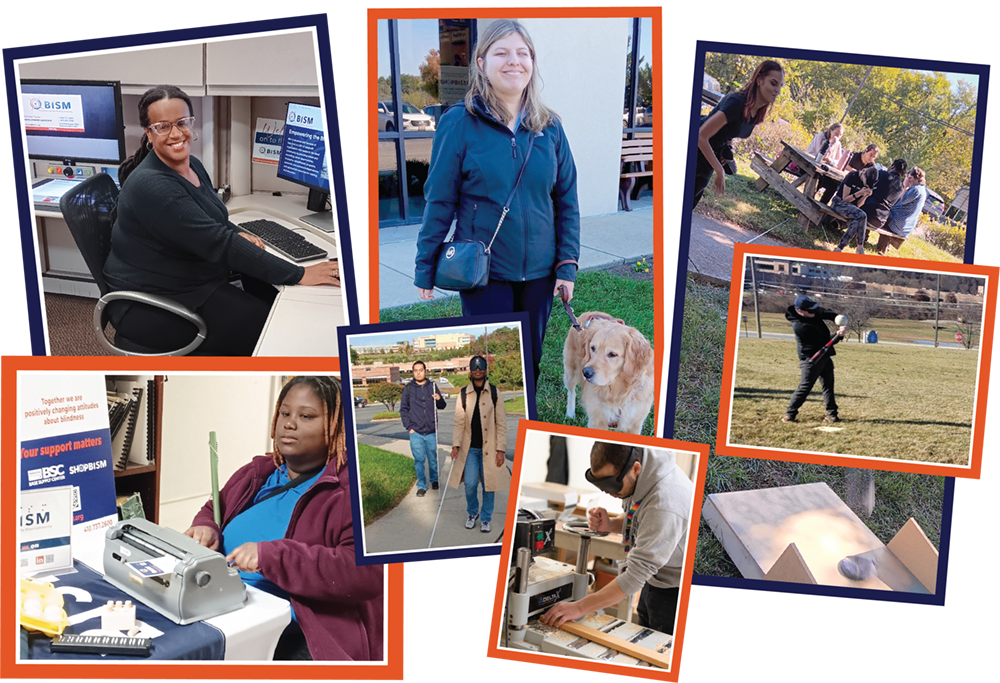By Emma Meyer
At Blind Industries and Services of Maryland (BISM), we believe in challenging misconceptions and fostering inclusivity. Our vision is simple but powerful: to create an environment with no limits for people who are blind. Yet, too often, when someone who is blind enters a room, myths and assumptions follow. It’s time to debunk some of the most common myths about blindness and low vision and shine a light on the truth.
Myth 1: Hiring blind employees is expensive.
Reality: Accommodating blind employees is often simple and cost-effective. Many tools, like screen readers, are affordable and easy to implement. In fact, these accommodations can significantly boost productivity, proving that investing in accessibility benefits everyone.
Myth 2: Assistive technology makes accessibility unnecessary.
Reality: While assistive technology like AI-powered image descriptions is useful, it’s not a replacement for thoughtful, accessible design. Blind individuals shouldn’t have to rely on these tools to navigate a world that can be made accessible from the start. Employers, educators, and content creators all share the responsibility to provide accessible materials—whether it’s ensuring a document is readable with a screen reader or designing websites with accessibility in mind.
Myth 3: Blind people can only work in certain fields.
Reality: This is one of the most persistent and incorrect assumptions. Blind individuals thrive in a wide range of industries—from software development to science, hospitality to law. We have blind chefs, engineers, and even chemists. Their skills and expertise are not limited by vision but enriched by their unique perspectives.
Myth 4: Blind people can’t participate in sports.
Reality: Blind athletes are active in all kinds of sports, from running and swimming to skiing. Some sports, like goalball, are designed specifically for blind athletes. With the right adaptations, blind individuals excel in both recreational and competitive sports, proving that vision is no barrier to staying active and healthy.
Myth 5: Braille isn’t necessary anymore.
Reality: While screen readers are useful, Braille is still essential for literacy and independence. Braille isn’t just about reading; it’s about writing, labeling, and accessing information without relying on audio. Whether it’s note-taking, presentations, or navigating everyday tasks, Braille empowers blind individuals to engage with the world on their own terms.
Myth 6: Blind people can’t use modern technology.
Reality: Today’s technology is more accessible than ever. Screen readers like JAWS and NVDA make navigating computers easy, while smartphones come equipped with built-in accessibility features. Blind users can accomplish most tasks just as efficiently as anyone else, though the methods might differ. For example, while a screen reader can help with grocery shopping, there are often more efficient ways to gather information in certain settings.
At BISM, we know that debunking these myths is just the beginning. Building a more inclusive society means advocating for accessibility, breaking down barriers, and ensuring that everyone—no matter their level of vision—has equal opportunities.



